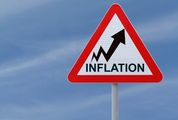IT IS heartening that the Treasury is working tirelessly to avoid SA’s credit rating being lowered to noninvestment grade. While there are differences between international currency credit ratings, which are often cited in the financial press, and local currency credit ratings, which are less spoken about, a downgrade to noninvestment grade on either local or foreign debt would have a serious effect on the country.
The best way to capture what typically happens when a country is downgraded to noninvestment grade is to analyse similar countries. Based on other emerging market countries with similar economic constructs to SA — employing inflation targeting and floating exchange rate regimes — potential outcomes from a downgrade to junk status are dire. Evidence from Colombia (1999), Romania (2008) and South Korea (1997) shows a downgrade has serious economic consequences and usually coincides with a bailout from the International Monetary Fund (IMF).
In the mid-1990s Colombia’s budget deficit increased unsustainably due to government commitments to social service benefits and transfers to local government. This brought the country to its financial knees, resulting in the need for a $2.7bn IMF loan and a downgrade by Standard & Poor’s (S&P) to noninvestment grade.
It took Colombia 12 years to return from junk to investment grade, with equities, bonds and the currency heavily depressed in that period.
During the 2008 global financial crisis Romania was pushed to junk status after it needed a major IMF bailout ($16bn) and support from other supranational institutions, including the European Union and the World Bank. A rapidly increasing public sector wage bill and pension benefits, combined with robust credit creation — especially in the property market — left Romania’s financial institutions vulnerable. When the global crisis erupted, the fiscus and banking sector experienced debilitating financial seizures. It took six years for Romania to return to investment grade.
South Korea provides an interesting case study. In 1997-98 the country was caught in a current account crisis and had large external debt, especially for state-owned enterprises. This was worsened by contagion effects after Thailand and Russia ignited a general emerging market crisis.
However, the South Korean authorities acted swiftly by approaching the IMF for a bailout ($35.1bn) as rating agencies downgraded its credit quality four notches to noninvestment grade. It took only 12 months for S&P to restore South Korea to investment grade after authorities in Seoul worked very hard to carry out the necessary reforms.
The response of asset markets depends on how long the country has junk status. Equity markets fall significantly during longer stays in noninvestment grade, as was the case with Colombia (12 years) and Romania (six years). Shorter stays are better for currencies and equity markets, as witnessed in South Korea.
Financial markets have already priced in SA as noninvestment grade, as the country’s debt is trading in global markets at similar levels to those of countries rated noninvestment grade, such as Turkey and Brazil. Machinations in the finance department in the latter part of last year left a huge cloud of uncertainty over fiscal policy.
If the response from the South African authorities results in an outcome similar to the Colombian experience, equity, bond and currency markets would be decimated over 12 years in noninvestment grade.
If the response is as agile as South Korea’s, outcomes in investment markets could be different and positive. In fact, a junk rating would prove a boon for astute investors as assets would become mispriced, creating ample investment opportunities.
After the 2008 financial crisis there was a surge of investments into companies that had been downgraded to junk. These "fallen angels" continued to provide good management and a business infrastructure similar to those rated investment grade. Similarly, fallen-angel countries that have a shorter time with junk status retain their strong economic infrastructure even in their fallen state.
It takes a very significant event, such as war, to completely wipe out the constructs of an economy and its institutions.
If SA is downgraded, will it be dropped from the Citigroup world government bond index (Citi WGBI)? There is a difference between ratings of debt issued in local currency (rand) and foreign-denominated debt issued in eurobond markets, for example. SA is rated higher on debt issued in rand (BBB+ by S&P), while the international rating on foreign-issued debt is lower (BBB-).
On a local currency rating, SA remains firmly in investment grade. Although it is at the lower end of the spectrum in terms of foreign-denominated debt rating, a downgrade to junk does not automatically mean SA will be booted out of global bond benchmarks such as the Citi WGBI.
Exit requirements of the Citi WGBI are that a country is downgraded on its local currency rating (not foreign) to noninvestment grade by two rating agencies: S&P and Moody’s. Given that SA remains firmly in investment grade in terms of local currency ratings (BBB+), it is unlikely to be dropped from the Citi WGBI soon. In fact, it would take an Arab Spring-type event to prompt rating agencies to push rand-denominated debt into junk.
From where it stands SA is far from an IMF bailout because it has buffers. External debt levels are low and the portion with short-term maturity is well covered by foreign exchange reserves. SA has five months’ worth of import cover.
It has deep and liquid financial markets, which can withstand a financial shock.
The trajectory is, however, a matter of great concern. If things stay on the same path there might be an increased probability of a need for external financial assistance. While the Colombian, Romanian and South Korean examples of the descent to junk status were all accompanied by an IMF bailout, financial constructs are different here in SA.
It is against this background that today’s presentation of the 2016-17 budget is the most important since the dawn of democracy in SA. Finance Minister Pravin Gordhan will have to move away from the usual "difficult balancing act" rhetoric and provide clear and decisive leadership for the country’s finances.
Growth in expenditure, especially on guarantees to state-owned enterprises, will have to be restrained. Plans to contain the huge public sector wage bill have not been satisfactorily implemented, and this must now happen. Care must be taken to avoid the introduction of new expenditure line items, such as nuclear, without a clear funding mechanism.
While tax increases can be used to shore up government coffers in the short term, the long-run effect is detrimental to growth. Higher taxes are not a desired path for SA, which has huge socioeconomic challenges.
The South Korean experience has demonstrated that being pushed to noninvestment grade does not have to be the end of the world.
Crises often breed opportunities to reform and improve economies. SA should not miss this opportunity to introduce structural economic reforms that could unlock the country’s potential to achieve its National Development Plan goals.
• Mothata is chief economist at Investment Solutions

Finance Minister Pravin Gordhan and National Treasury Director-General Lungisa Fuzile at a pre-budget meeting on Tuesday. Picture: TREVOR SAMSON
IT IS heartening that the Treasury is working tirelessly to avoid SA’s credit rating being lowered to noninvestment grade. While there are differences between international currency credit ratings, which are often cited in the financial press, and local currency credit ratings, which are less spoken about, a downgrade to noninvestment grade on either local or foreign debt would have a serious effect on the country.
The best way to capture what typically happens when a country is downgraded to noninvestment grade is to analyse similar countries. Based on other emerging market countries with similar economic constructs to SA — employing inflation targeting and floating exchange rate regimes — potential outcomes from a downgrade to junk status are dire. Evidence from Colombia (1999), Romania (2008) and South Korea (1997) shows a downgrade has serious economic consequences and usually coincides with a bailout from the International Monetary Fund (IMF).
In the mid-1990s Colombia’s budget deficit increased unsustainably due to government commitments to social service benefits and transfers to local government. This brought the country to its financial knees, resulting in the need for a $2.7bn IMF loan and a downgrade by Standard & Poor’s (S&P) to noninvestment grade.
It took Colombia 12 years to return from junk to investment grade, with equities, bonds and the currency heavily depressed in that period.
During the 2008 global financial crisis Romania was pushed to junk status after it needed a major IMF bailout ($16bn) and support from other supranational institutions, including the European Union and the World Bank. A rapidly increasing public sector wage bill and pension benefits, combined with robust credit creation — especially in the property market — left Romania’s financial institutions vulnerable. When the global crisis erupted, the fiscus and banking sector experienced debilitating financial seizures. It took six years for Romania to return to investment grade.
South Korea provides an interesting case study. In 1997-98 the country was caught in a current account crisis and had large external debt, especially for state-owned enterprises. This was worsened by contagion effects after Thailand and Russia ignited a general emerging market crisis.
However, the South Korean authorities acted swiftly by approaching the IMF for a bailout ($35.1bn) as rating agencies downgraded its credit quality four notches to noninvestment grade. It took only 12 months for S&P to restore South Korea to investment grade after authorities in Seoul worked very hard to carry out the necessary reforms.
The response of asset markets depends on how long the country has junk status. Equity markets fall significantly during longer stays in noninvestment grade, as was the case with Colombia (12 years) and Romania (six years). Shorter stays are better for currencies and equity markets, as witnessed in South Korea.
Financial markets have already priced in SA as noninvestment grade, as the country’s debt is trading in global markets at similar levels to those of countries rated noninvestment grade, such as Turkey and Brazil. Machinations in the finance department in the latter part of last year left a huge cloud of uncertainty over fiscal policy.
If the response from the South African authorities results in an outcome similar to the Colombian experience, equity, bond and currency markets would be decimated over 12 years in noninvestment grade.
If the response is as agile as South Korea’s, outcomes in investment markets could be different and positive. In fact, a junk rating would prove a boon for astute investors as assets would become mispriced, creating ample investment opportunities.
After the 2008 financial crisis there was a surge of investments into companies that had been downgraded to junk. These "fallen angels" continued to provide good management and a business infrastructure similar to those rated investment grade. Similarly, fallen-angel countries that have a shorter time with junk status retain their strong economic infrastructure even in their fallen state.
It takes a very significant event, such as war, to completely wipe out the constructs of an economy and its institutions.
If SA is downgraded, will it be dropped from the Citigroup world government bond index (Citi WGBI)? There is a difference between ratings of debt issued in local currency (rand) and foreign-denominated debt issued in eurobond markets, for example. SA is rated higher on debt issued in rand (BBB+ by S&P), while the international rating on foreign-issued debt is lower (BBB-).
On a local currency rating, SA remains firmly in investment grade. Although it is at the lower end of the spectrum in terms of foreign-denominated debt rating, a downgrade to junk does not automatically mean SA will be booted out of global bond benchmarks such as the Citi WGBI.
Exit requirements of the Citi WGBI are that a country is downgraded on its local currency rating (not foreign) to noninvestment grade by two rating agencies: S&P and Moody’s. Given that SA remains firmly in investment grade in terms of local currency ratings (BBB+), it is unlikely to be dropped from the Citi WGBI soon. In fact, it would take an Arab Spring-type event to prompt rating agencies to push rand-denominated debt into junk.
From where it stands SA is far from an IMF bailout because it has buffers. External debt levels are low and the portion with short-term maturity is well covered by foreign exchange reserves. SA has five months’ worth of import cover.
It has deep and liquid financial markets, which can withstand a financial shock.
The trajectory is, however, a matter of great concern. If things stay on the same path there might be an increased probability of a need for external financial assistance. While the Colombian, Romanian and South Korean examples of the descent to junk status were all accompanied by an IMF bailout, financial constructs are different here in SA.
It is against this background that today’s presentation of the 2016-17 budget is the most important since the dawn of democracy in SA. Finance Minister Pravin Gordhan will have to move away from the usual "difficult balancing act" rhetoric and provide clear and decisive leadership for the country’s finances.
Growth in expenditure, especially on guarantees to state-owned enterprises, will have to be restrained. Plans to contain the huge public sector wage bill have not been satisfactorily implemented, and this must now happen. Care must be taken to avoid the introduction of new expenditure line items, such as nuclear, without a clear funding mechanism.
While tax increases can be used to shore up government coffers in the short term, the long-run effect is detrimental to growth. Higher taxes are not a desired path for SA, which has huge socioeconomic challenges.
The South Korean experience has demonstrated that being pushed to noninvestment grade does not have to be the end of the world.
Crises often breed opportunities to reform and improve economies. SA should not miss this opportunity to introduce structural economic reforms that could unlock the country’s potential to achieve its National Development Plan goals.
• Mothata is chief economist at Investment Solutions
























Change: -0.47%
Change: -0.57%
Change: -1.76%
Change: -0.34%
Change: 0.02%
Data supplied by Profile Data
Change: -1.49%
Change: 0.08%
Change: -0.47%
Change: 0.00%
Change: -0.04%
Data supplied by Profile Data
Change: -0.34%
Change: 0.03%
Change: -0.10%
Change: -0.22%
Change: -0.69%
Data supplied by Profile Data
Change: -0.28%
Change: -1.15%
Change: -0.07%
Change: -1.21%
Change: -0.22%
Data supplied by Profile Data